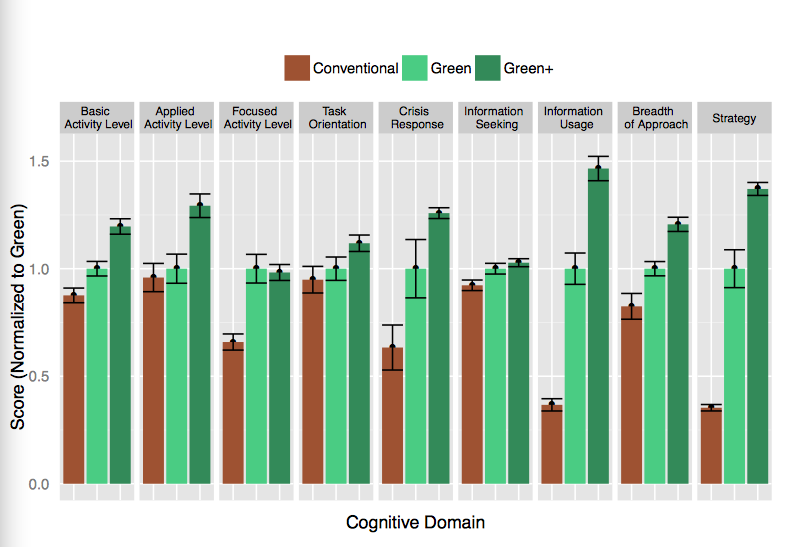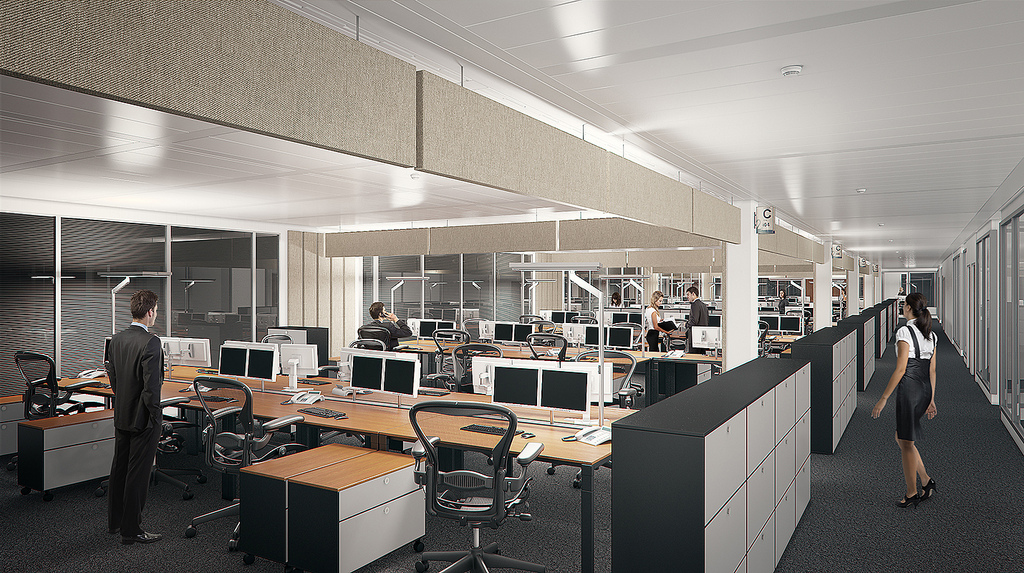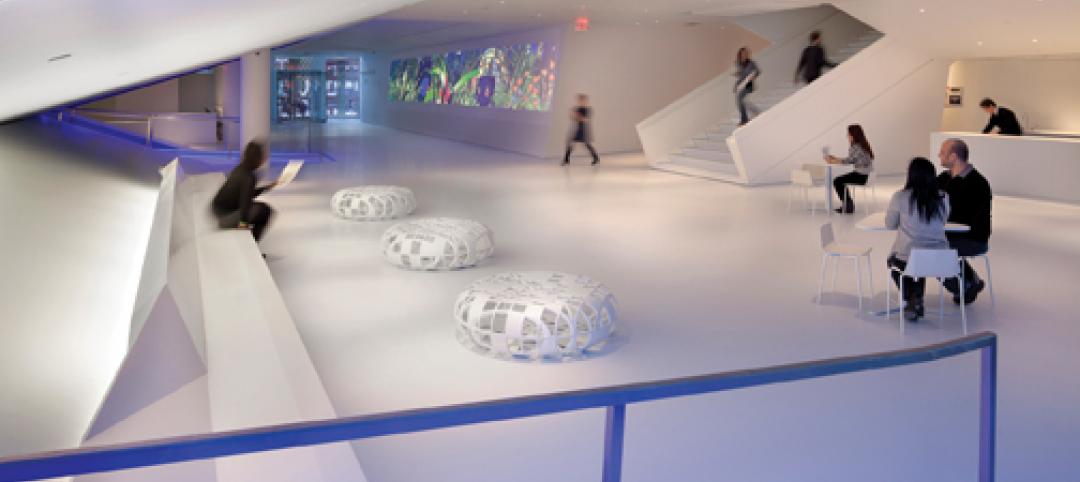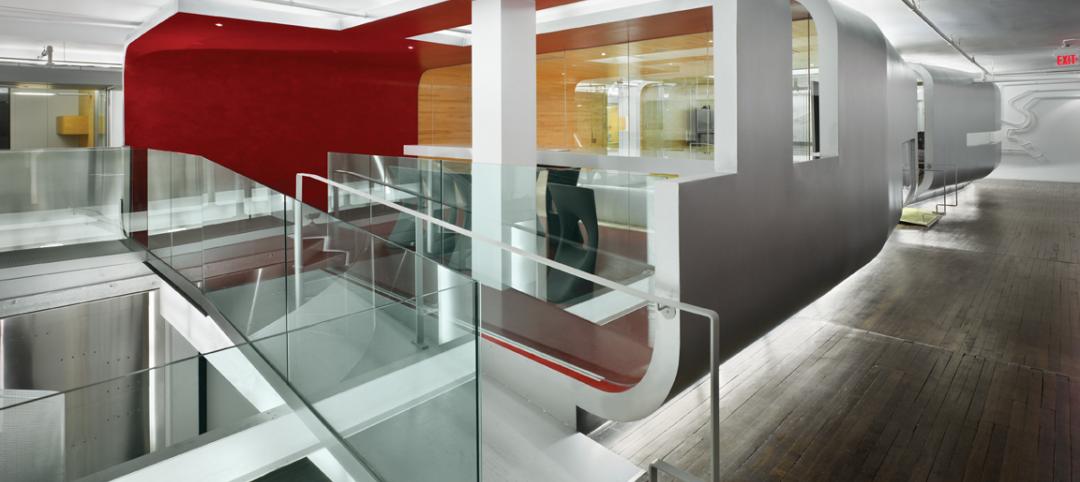Experts, including those in the AEC community, who have been insisting for years that indoor air quality affects occupants’ performance and health could soon have more ammunition to back up their claims.
The Wall Street Journal reports that Washington University at St. Louis last summer initiated what will be a yearlong experiment to test whether a newly constructed building, designed with easy access to stairways, natural daylight, and other “wellness” features, improves employees’ physical well being and promotes worker collaboration. The Journal also reports that the Well Living Lab, a research facility near the Mayo Clinic in Minnesota, early next year will begin clinical trials designed to assess indoor environments, with the goal of creating healthier spaces.
On October 26, Environmental Health Perspectives—a monthly journal of news and research published with support from the National Institute of Environmental Sciences (NIES), the National Institutes of Health, and the U.S. Department of Health and Human Services—released in advance of publication a peer-reviewed paper that details a recent study of 24 participants—architects, designers, programmers, engineers, creative marketers, and managers—who spent six full workdays in an environmentally controlled office space, blinded to test conditions.
The study population was restricted to non-sensitive persons by excluding current smokers and people with asthma, claustrophobia, or schizophrenia.
On different days, the participants were exposed to Indoor Environmental Quality (IEQ) conditions with high and low concentrations of volatile organic compounds (VOCs) that were representative of office buildings in the U.S. Additional conditions simulated a Green building with a high outdoor air ventilation rate and artificially elevated carbon dioxide levels independent of ventilation.
The study found that, on average, the participants’ cognitive scores were 61% higher on Green building days and 101% higher on days when the air ventilation was highest (so-called Green+ days), compared to the air quality during “Conventional” building days. “These findings have wide-ranging implications because this study was designed to reflect conditions that are commonly encountered every day in many indoor environments,” the study’s authors state.
 A recent study tested the cognition of 24 participants for nine activities, based on different levels of indoor air quality exposure. “Conventional” was air quality that's typical of most office buildings; Green+ indicated the highest level of air ventilation.
A recent study tested the cognition of 24 participants for nine activities, based on different levels of indoor air quality exposure. “Conventional” was air quality that's typical of most office buildings; Green+ indicated the highest level of air ventilation.
The study took place over two weeks in November 2014 at the Willis H. Carrier Total Indoor Environmental Quality Laboratory at the Syracuse Center for Excellence. The lab had two nearly identical office environments located adjacent to one another, each with 12 cubicles.
Cognitive assessment of the participants was performed daily using the Strategic Management Simulation software tool, a validated, computer-based test designed to test the effectiveness of management-level employees through assessments of higher-order decision-making.
The study found that the largest effects of conditions on cognition were seen for Crisis Response, Information Usage, and Strategy. For Crisis Response, for example, scores were 97% higher for the Green condition compared to the Conventional, and 131% higher for participants during Green+ days.
Conversely, “we found statistically significant declines in cognitive function scores when CO2 concentrations were increased to levels that are common in indoor spaces (approximately 950 ppm). In fact, this level of CO2 is considered acceptable because it would satisfy ASHRAE’s ventilation rate guideline for acceptable indoor air quality,” the authors state.
The paper, whose six authors worked under the auspices of NIES, was reviewed and approved by the Harvard T.H. Chan School of Public Health Institutional Review Board. The participant group was 42% male, 58% female. One-third of the group was between the ages of 20 and 30, and 25% was between the ages of 41 and 50. Ninety-two percent of the group was Caucasian, 54% has a college degree, and 63% holds professional jobs.
Related Stories
| Sep 12, 2011
First phase of plan to revitalize Florida's Hialeah Park announced
This is the first project of a master plan developed to revive the historic racetrack.
| May 24, 2011
Guardian partners with Joel Berman Glass Studios
Guardian Industries expands interiors offering as exclusive manufacturer and distributor of signature glass textures designed by Joel Berman Glass Studios.
| May 18, 2011
Lab personnel find comfort in former Winchester gun factory
The former Winchester Repeating Arms Factory in New Haven, Conn., is the new home of PepsiCo’s Biology Innovation Research Laboratory.
| May 18, 2011
Improvements add to Detroit convention center’s appeal
Interior and exterior renovations and updates will make the Detroit Cobo Center more appealing to conventioneers. A new 40,000-sf ballroom will take advantage of the center’s riverfront location, with views of the river and downtown.
| May 18, 2011
Carnegie Hall vaults into the 21st century with a $200 million renovation
Historic Carnegie Hall in New York City is in the midst of a major $200 million renovation that will bring the building up to contemporary standards, increase educational and backstage space, and target LEED Silver.
| Apr 13, 2011
Office interaction was the critical element to Boston buildout
Margulies Perruzzi Architects, Boston, designed the new 11,460-sf offices for consultant Interaction Associates and its nonprofit sister organization, The Interaction Institute for Social Change, inside an old warehouse near Boston’s Seaport Center.
| Apr 13, 2011
Expanded Museum of the Moving Image provides a treat for the eyes
The expansion and renovation of the Museum of the Moving Image in the Astoria section of Queens, N.Y., involved a complete redesign of its first floor and the construction of a three-story 47,000-sf addition.
| Apr 13, 2011
Red Bull Canada HQ a mix of fluid spaces and high-energy design
The Toronto architecture firm Johnson Chou likes to put a twist on its pared-down interiors, and its work on the headquarters for Red Bull Canada is no exception. The energy drink maker occupies 12,300 sf on the top two floors of a three-story industrial building in Toronto, and the design strategy for its space called for leaving the base building virtually untouched while attention was turned to the interior architecture.
| Mar 11, 2011
Holiday Inn reworked for Downtown Disney Resort
The Orlando, Fla., office of VOA Associates completed a comprehensive interior and exterior renovation of the 14-story Holiday Inn in the Downtown Disney Resort in Lake Buena Vista, Fla. The $25 million project involved rehabbing the hotel’s 332 guest rooms, atrium, swimming pool, restaurant, fitness center, and administrative spaces.
















